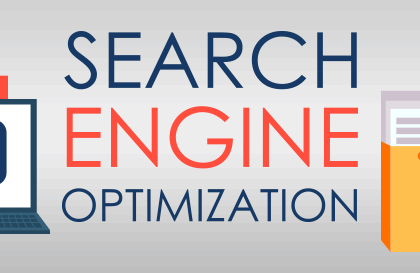The Power of Diagnostic Data Analysis
In today’s data-driven world, the ability to extract valuable insights from vast amounts of data is crucial for businesses and organisations across all industries. Diagnostic data analysis plays a key role in this process, enabling professionals to delve deeper into data sets to understand the root causes of issues, identify patterns, and make informed decisions.
Diagnostic data analysis involves examining historical data to determine why certain events occurred. By analysing this data, businesses can gain a better understanding of what factors contributed to specific outcomes or trends. This information is invaluable for improving processes, troubleshooting problems, and predicting future scenarios.
One of the primary benefits of diagnostic data analysis is its ability to uncover hidden insights that may not be immediately apparent. By using advanced analytical techniques and tools, professionals can identify correlations, anomalies, and trends that can provide valuable information for decision-making.
Furthermore, diagnostic data analysis allows businesses to track performance metrics over time and compare them against benchmarks or targets. This helps organisations monitor progress towards their goals, identify areas for improvement, and make adjustments to their strategies as needed.
By harnessing the power of diagnostic data analysis, businesses can gain a competitive edge in their respective industries. Whether it’s improving operational efficiency, enhancing customer experience, or predicting market trends, the insights derived from thorough data analysis can drive strategic decision-making and lead to tangible results.
In conclusion, diagnostic data analysis is a powerful tool that empowers businesses to unlock the full potential of their data assets. By leveraging advanced analytical techniques and tools, organisations can gain valuable insights that drive innovation, improve performance, and ultimately achieve success in today’s fast-paced business environment.
Six Essential Tips for Effective Diagnostic Data Analysis
- Ensure data quality by cleaning and preprocessing the data before analysis.
- Use descriptive statistics to summarise and understand the characteristics of the data.
- Apply exploratory data analysis techniques to identify patterns, trends, and outliers in the data.
- Utilise visualisation tools such as charts and graphs to communicate findings effectively.
- Consider using statistical tests to make inferences and draw conclusions from the data.
- Document your analysis process and results for reproducibility and transparency.
Ensure data quality by cleaning and preprocessing the data before analysis.
To maximise the effectiveness of diagnostic data analysis, it is essential to ensure data quality by thoroughly cleaning and preprocessing the data before conducting any analysis. By cleaning and preprocessing the data, including removing duplicates, handling missing values, and standardising formats, businesses can improve the accuracy and reliability of their insights. This meticulous process sets a solid foundation for meaningful analysis, enabling professionals to extract valuable information and make informed decisions based on high-quality data.
Use descriptive statistics to summarise and understand the characteristics of the data.
Utilising descriptive statistics is a fundamental tip in diagnostic data analysis as it enables professionals to succinctly summarise and comprehend the essential characteristics of the data at hand. By employing methods such as mean, median, mode, standard deviation, and range, analysts can gain valuable insights into the central tendency, dispersion, and distribution of the data set. This statistical approach not only simplifies complex data into meaningful summaries but also aids in identifying patterns, outliers, and trends that are instrumental in making informed decisions and driving strategic actions based on a comprehensive understanding of the data.
Apply exploratory data analysis techniques to identify patterns, trends, and outliers in the data.
To enhance the effectiveness of diagnostic data analysis, it is recommended to apply exploratory data analysis techniques. By utilising these methods, professionals can uncover valuable patterns, trends, and outliers within the data. Exploratory data analysis allows for a comprehensive exploration of the dataset, enabling a deeper understanding of the underlying relationships and insights that may not be immediately apparent. By identifying these patterns and outliers early on, businesses can make more informed decisions and take proactive measures to address any issues or leverage opportunities present in the data.
Utilise visualisation tools such as charts and graphs to communicate findings effectively.
Utilising visualisation tools such as charts and graphs is a valuable tip in diagnostic data analysis. Visual representations of data not only make complex information easier to understand but also enable professionals to communicate their findings effectively. By presenting data visually, using charts and graphs, analysts can highlight trends, patterns, and correlations in a way that is clear and impactful. This visual approach not only enhances the comprehension of the data but also helps stakeholders make informed decisions based on the insights derived from the analysis.
Consider using statistical tests to make inferences and draw conclusions from the data.
When conducting diagnostic data analysis, it is essential to consider using statistical tests to make inferences and draw conclusions from the data. Statistical tests provide a systematic way to analyse data and determine the significance of relationships or patterns observed. By applying appropriate statistical methods, professionals can validate their findings, identify key insights, and make informed decisions based on solid evidence. This rigorous approach not only enhances the credibility of the analysis but also ensures that conclusions drawn from the data are robust and reliable.
Document your analysis process and results for reproducibility and transparency.
It is essential to document your analysis process and results when conducting diagnostic data analysis to ensure reproducibility and transparency. By documenting each step taken, including data preprocessing, analytical methods used, and conclusions drawn, you create a clear record of how insights were derived. This documentation not only allows for the replication of your analysis by others but also promotes transparency in decision-making processes. Ultimately, documenting your analysis process and results enhances the credibility of your findings and facilitates collaboration within the data analysis community.





